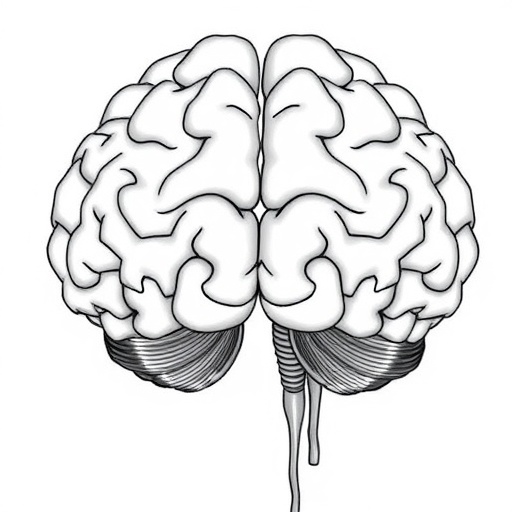Recent advances in neuroscience have provided deep insights into the intricacies of brain function, particularly in the context of social behaviors and emotional bonding. A new study illuminating the sex differences in neurochemical structures within the ventral anterior cingulate cortex (vACC) presents groundbreaking findings that could reshape our understanding of monogamous pair bonding. These findings shed light on the roles of receptor mRNA expression and structural variations in the brains of monogamous rodents, specifically the California mouse (Peromyscus californicus). Notably, this research uncovers previously uncharted territories regarding how sex hormones might influence these neural mechanisms and contribute to enduring emotional bonds.
The study’s authors, led by Malone et al., delve into the neural substrates of social behavior, particularly the establishment of pair bonds among California mice. This species serves as an excellent model for research on monogamy due to its propensity to form long-term mating pairs. Understanding the underpinnings of this behavior offers profound implications for grasping the biological basis of social relationships in a broader context, including humans. The uniqueness of the California mouse lies in its persistent pair bonding, which makes it an ideal candidate for examining the molecular and cellular changes that occur in the brain during this process.
At the core of their investigation, the researchers focused on the differential expression of structural and receptor mRNA within the vACC. This region is critically involved in emotional regulation, decision-making, and social interactions. The researchers utilized modern techniques such as in situ hybridization and quantitative PCR to analyze mRNA expression levels of various receptors. This rigorous experimental approach ensured that they accurately captured the intricate dynamics of these molecules in both male and female California mice.
The findings reveal striking variations in receptor mRNA expression between sexes. Specifically, male California mice exhibited heightened levels of certain receptors that are associated with reward-related behaviors and emotional attachment. In contrast, female mice displayed a distinct expression profile that suggests a different neurochemical mechanism underlying pair bonding. Such discrepancies highlight not only the complexity of emotional connections but also the potential evolutionary advantages conferred by these differences. Understanding how these neurobiological factors interact with hormonal influences can provide a broader understanding of sexual dimorphism in social bonding.
One compelling aspect of this study is the potential influence of perineuronal nets (PNNs) within the vACC on pair bond formation. PNNs are specialized extracellular matrix structures that surround certain neurons and are believed to modulate synaptic function and plasticity. The presence and density of PNNs can significantly affect how neurons communicate and adapt to their environment. By examining the correlation between PNNs and receptor expression, the researchers propose a novel mechanism by which neural structures might support or inhibit pair bonding behaviors. This perspective opens new avenues for research into how physical structures in the brain could help sustain complex social relationships across different species.
Additionally, the authors discuss the implications of their findings in the context of hormonal variations, particularly the influence of estrogen and testosterone on neural expression patterns. Hormonal fluctuations throughout different life stages can have profound effects on brain structure and function, particularly in regions associated with emotional and social behaviors. Understanding the hormonal modulation of the vACC’s neural circuitry also sheds light on broader questions regarding how external factors influence intrinsic brain functions. This area of research could have far-reaching implications for understanding psychiatric disorders characterized by social dysfunction.
Moreover, this research raises intriguing questions about the role of genetic and environmental factors in shaping emotional bonds. While the study primarily focuses on neurobiology, it implicitly challenges the notion that pair bonding is solely a product of genetic predisposition. Social experiences, environmental stressors, and even cultural factors may interweave with biological mechanisms to create a rich tapestry of relationship dynamics in not only mouse models but potentially in other mammals as well.
This study also endeavors to bridge the gap between basic science and applied research. Insights gained from understanding the neural underpinnings of pair bonding in California mice could inform therapeutic approaches for treating social deficits in humans, particularly in conditions like autism spectrum disorders or social anxiety. By identifying the molecular pathways involved in bonding behavior, researchers can begin to explore interventions that enhance or mitigate these pathways in clinical contexts.
In summary, Malone et al.’s research introduces a revolutionary approach to studying monogamous pair bonding through the lens of neurobiology. By detailing the sex differences in structural and receptor mRNA expression in the vACC, they not only illuminate the complexities of emotional connections but also offer new pathways for exploring the intersection of hormones, environment, and social behavior. As science continues to evolve, the insights gleamed from studies like this one will undoubtedly have lasting effects on our understanding of the biological basis of love, attachment, and social cohesion. It seems that the frontier of neuroscience is poised to unlock more secrets in the realms of social behavior, providing clarity on how our brains are wired for connection.
The exploration of the dynamics of neurochemistry highlights the intricacies of bonding across different species, ultimately suggesting that the quest for love and companionship may be a fundamentally biological endeavor. As researchers continue to unravel these mysteries, the implications for both animals and humans could be transformative, offering a deeper understanding of our social selves. Thus, this groundbreaking study is likely to serve as a catalyst for future research aimed at dissecting the complex interplay of biology and behavior in love and social bonding.
Subject of Research: Sex differences in structural and receptor mRNA expression in the ventral anterior cingulate cortex related to monogamous pair bonding.
Article Title: Sex differences in structural and receptor mRNA expression in the ventral anterior cingulate cortex and a potential role of perineuronal nets in monogamous pair bond establishment (Peromyscus californicus).
Article References:
Malone, C.L., Li, J., Luebke, E.M. et al. Sex differences in structural and receptor mRNA expression in the ventral anterior cingulate cortex and a potential role of perineuronal nets in monogamous pair bond establishment (Peromyscus californicus). Biol Sex Differ 16, 58 (2025). https://doi.org/10.1186/s13293-025-00741-4
Image Credits: AI Generated
DOI: 10.1186/s13293-025-00741-4
Keywords: neurobiology, pair bonding, California mouse, emotional regulation, sex differences, receptor mRNA, perineuronal nets.
Tags: biological basis of social relationshipshormonal influence on neural mechanismsimplications for human social behaviorlong-term mating pairs in animalsmolecular changes in brain during bondingmonogamous rodents and emotional bondingneurochemical structures and social behaviorneuroscience of emotional connectionspair bonding in California micereceptor mRNA expression variationssex differences in brain mRNAventral anterior cingulate cortex research



